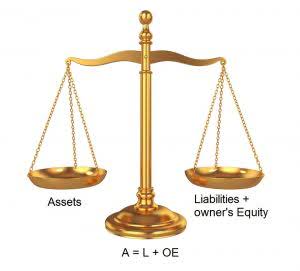
With Freshbooks, you online bookkeeping can generate invoices, auto-billing notices, track time and expenses, and allow easy collaboration. It’s also in the cloud, so an organization doesn’t have to worry about data loss. The operating activities section of the SCF reports the changes in cash other than those reported in the investing and financing sections. Under the accrual method of accounting, expenses are to be reported in the accounting period in which they best match the related revenues. If that is not clear, then the expenses should be reported in the period in which they are used up. If there is uncertainty as to when an expense is matched or is used up, the amount spent should be reported as an expense in the current period.

AccountingTools
Once again, this statement will show transparency and build trust with their donors. The statement of functional expenses gives donors more details on how the organization spends funds. The IRS requires nonprofits to include this statement when filing Form 990.
- Nonprofits benefit from perks like tax-exempt status, meaning they don’t have to pay federal income tax on money they raise for their mission.
- Positive cash flow from operating activities indicates that the organization can support its regular activities without relying on external funding sources, a sign of financial health.
- In contrast, for-profit businesses use a balance sheet which reflects the assets the corporation owns.
- You can also manage donors, send them automated donation receipts, add offline donations, let donors login and manage their accounts themselves, and more on Donorbox.
- The easiest way to find financial information about a fiscally sponsored organization is to search the sponsor’s Form 990.
- This separation in the records makes sure the nonprofit uses grants and donations only for allowed purposes.
types of nonprofit financial statements

It shows all the money coming in (like donations and grants) and going out (like costs for programs and grants to other organizations). This statement helps everyone understand the organization’s financial activities, including what your organization owns (assets) and what it owes (liabilities). Just like puzzle pieces fit together to show a bigger picture, different financial statements connect to give a full view of a nonprofit’s financial health. Let’s explore how these pieces, like the statement of activities, balance sheet, statement of functional expenses, and statement of cash flow, fit together to help nonprofits make informed Bookkeeping for Veterinarians decisions.
Revenues, gains, other support, and releases from donor restrictions

The last of the four essential financial statements, the statement of functional expenses, is unique to nonprofits. In most accounting systems, expenditures are typically recorded as natural expenses, which are based on the nature of the payment. Most for-profit organizations stop there, but nonprofits have to go one step further and reorganize their costs based on their function in furthering the organization’s mission, which are known as functional expenses.
- Government and nonprofit financial statements can typically be found on the organization’s website or you can call them and request a copy.
- Like assets, liabilities are divided into current liabilities and non-current liabilities.
- A balance sheet in nonprofit accounting is also called the statement of financial position.
- Transparency and accountability are paramount, especially for nonprofit organizations seeking to build trust with donors.
- As described previously, obtaining, maintaining, and retaining a nonprofit’s 501(c)(3) status requires compliance, including in bookkeeping and financial statements.
Fiscal sponsors will list their fiscal sponsorships in their 990s and some may even provide itemized donation information for their fiscal sponsorees. The easiest way to find financial information about a fiscally sponsored organization is to search the financial statements for nonprofits sponsor’s Form 990. For-profit businesses use off-the-shelf accounting software, a one-size-fits-all solution. However, this does not meet the nonprofit fund and functional accounting requirements. Remember, you must take an extra step to export all your data into spreadsheets to generate financials. To clarify, fund accounting focuses on accountability and donor stewardship.
- While the statement of activities gives an overall view of financial performance by showing total expenses from total revenue, the statement of functional expenses breaks those numbers down.
- By following best practices, nonprofits can streamline their financial processes, reduce errors, and improve the reliability of their reports.
- By analyzing the balance sheet, income statement, and statement of cash flows, stakeholders can gain insights into the organization’s financial position, performance, and cash management practices.
- By learning from real-life examples and adopting best practices, nonprofits can overcome common challenges and ensure the accuracy and reliability of their audited financial statements.
- Look at the organization’s cash inflows to see if they are increasing or decreasing over time.
- Nonprofit financial statements are formal records that provide a comprehensive overview of a nonprofit organization’s financial health and activities.

An annual report often includes a financial overview, including a breakdown of revenues and expenses, changes over the past year (such as investments in infrastructure or the sale of assets), and sources of income. Annual reports are created by the nonprofit and often provide more detailed information on their financial situation and program impact. Search for annual reports on Candid’s GuideStar database or the nonprofit’s website. Nonprofit accounting requirements include taxes (income tax, social security tax), maintaining 501(c)(3) status (if applicable), ensuring compliance with relevant regulations, and filing IRS Form 990. Nonprofits also need to follow fund accounting principles and report their financial statements according to GAAP for nonprofits.
Best practices for nonprofit financial reporting
However, with a basic understanding of the key parts and ratios, it becomes easier. Therefore, choosing accounting software designed specifically for nonprofits making preparing and generating financial reports much easier. A nonprofit’s Statement of Activities is an adopted income statement, or profit and loss report. The Statement of Activities measures the impact of the company’s revenues and expenses and gives users the total change in net assets. The activity reported on this statement covers a specified period of time, usually one month or one year. Since nonprofit financial statements differ from traditional financial reports, we’ve put together this simple guide to reading those essential statements.
- It involves assessing various financial factors, such as surplus or deficit trends, diversification of revenue sources, and the organization’s ability to maintain appropriate levels of reserves or endowment funds.
- Code for Science & Society depicts their financial expenses on this page of their report rather concisely and transparently.
- Financial reporting for nonprofits not only fulfills regulatory requirements but also helps build trust among donors, stakeholders, and the community.
- The content on this website is provided “as is;” no representations are made that the content is error-free.
- There is no internationally agreed way for Non-profit organisations to present their financial statements.
- FastFund is designed specifically for nonprofits, so you can be sure it meets your unique needs.
For instance, by dividing your total current assets by your total liabilities, you can calculate your current liquidity ratio. The higher the ratio, the better equipped you are to pay back all your liabilities. The first step to having clear and transparent financial statements is to open a bank account. At Relay, we help nonprofits simplify their finances, securely collaborate with their financial advisors, and stay on top of their cash flow. From no-fee checking and savings to powerful accounting integrations, Relay is uniquely built to serve nonprofits. In this article, we’ll explore why nonprofit organizations need financial statements.
